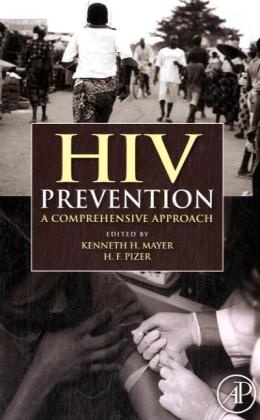Read more
Klappentext HIV/AIDS continues to be the pandemic of our times. It is estimated that 36 to 45 million people including 2-3 million children already are infected worldwide and an additional 4-7 million more are infected each year. There has not been a comprehensive medically based AIDS prevention book published in the last five years. Since that time many new program interventions have been tried and much has been learned through evidence-based research. HIV Prevention will place special focus on the array of interventions that have been proven effective through rigorous study. If there is one theme that has been learned to date it is that there is no one-size-fits-all prevention approach that will work in all the geographic, demographic and socio-cultural environments impacted by the worldwide AIDS pandemic. Primary: Researchers and specialists in infectious diseases, public and global health, epidemiology, virology, immunology and behavioral sciences working on AIDS/HIV. Secondary: Health practitioners, graduate students in the above areas, NGOs and foundations. Inhaltsverzeichnis Introduction I. Section I: Contexts and Principles: epidemiology, applied virology, microbiology, infectious disease and behavioural psychology applied to the design of AIDS prevention interventions Chapter 1: Current And Future Trends: Implications For Prevention Chapter 2. Biology of HIV Transmission Chapter 3: Principles and Theories of Behavior Applied to HIV Prevention II. Section II: Evidence-Based Prevention Interventions: programs for at-risk populations Chapter 4. Individual Interventions Chapter 5. Dyadic and Group Interventions Chapter 6. Structural Interventions in Societal Contexts Chapter 7: Voluntary Counselling and Testing Chapter 8: Interventions With Men Who Have Sex With Men Chapter 9. Interventions With Injecting Drug Users Chapter 10: Interventions With Sex Workers Chapter 11: Interventions With Youth in High Prevalence Areas Chapter 12: Interventions With Incarcerated and Institutionalized Persons Chapter 13. Preventing Perinatal Transmission III. Policy, Technology and Research: Biomedical technologies for prevention, testing and research Chapter 14. Harm Reduction and Public Health Chapter 15. STD Control for HIV Prevention Chapter 16 Using Antiretrovirals to Prevent HIV Transmission Chapter 17 Microbicides Chapter 18 Vaccines Chapter 19. Program Monitoring and Evaluation ...
List of contents
Introduction
I. Section I: Contexts and Principles: epidemiology, applied virology, microbiology, infectious disease and behavioural psychology applied to the design of AIDS prevention interventions
Chapter 1: Current And Future Trends: Implications For Prevention
Chapter 2. Biology of HIV Transmission
Chapter 3: Principles and Theories of Behavior Applied to HIV Prevention
II. Section II: Evidence-Based Prevention Interventions: programs for at-risk populations
Chapter 4. Individual Interventions
Chapter 5. Dyadic and Group Interventions
Chapter 6. Structural Interventions in Societal Contexts
Chapter 7: Voluntary Counselling and Testing
Chapter 8: Interventions With Men Who Have Sex With Men
Chapter 9. Interventions With Injecting Drug Users
Chapter 10: Interventions With Sex Workers
Chapter 11: Interventions With Youth in High Prevalence Areas
Chapter 12: Interventions With Incarcerated and Institutionalized Persons
Chapter 13. Preventing Perinatal Transmission
III. Policy, Technology and Research: Biomedical technologies for prevention, testing and research
Chapter 14. Harm Reduction and Public Health
Chapter 15. STD Control for HIV Prevention
Chapter 16 Using Antiretrovirals to Prevent HIV Transmission
Chapter 17 Microbicides
Chapter 18 Vaccines
Chapter 19. Program Monitoring and Evaluation

